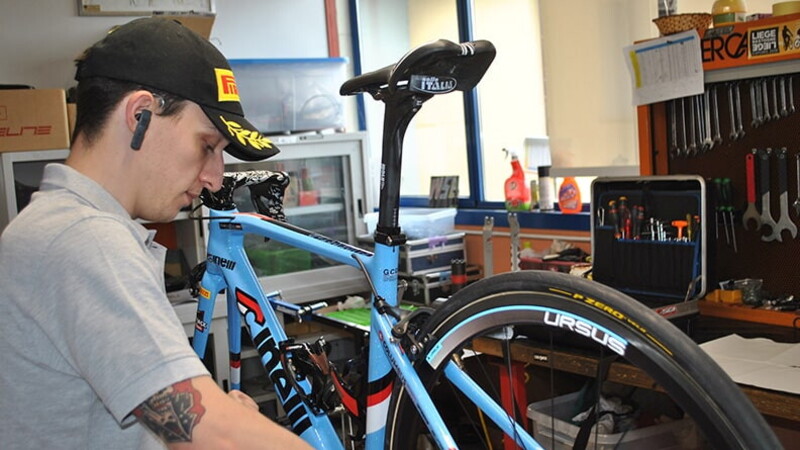The saddle is perhaps the most personal part of a bicycle, because the approach to choosing it depends on the rider's physical build (particularly the ischiatic bones), personal needs and other subjective factors. Some people need a padded saddle, or one with a particular pressure-relief system, while others can pedal for 180 kilometres on a sheet of carbon. We asked Stefano Casiraghi, mechanic for the Colpack Ballan Team, to give us some advice on how amateur cyclists should choose a saddle and on the basic adjustments they can make.

Choosing
Saddles differ in many respects such as shape, padding, and the presence or otherwise of a pressure-relief channel. «It's really a very subjective thing», explains Stefano Casiraghi, who recommends talking to a biomechanist for advice on finding the best saddle.
A central pressure-relief hole or channel is generally recommended for people with a large height difference between the saddle and the handlebar (which therefore leads to strong weight pressure on the pelvic floor area), or for people of a certain age who are concerned about possible prostate issues. A pressure-relief channel is always advisable in any case, unless the cyclist suffers from pain in the lateral areas.
For comfortable cycling, however, at least a little padding is always a good idea - even though comfort is a strictly personal factor.
Stefano Casiraghi's saddles
SLR (closed saddle)
SLR Flow (saddle with small channel)
SLR super flow (saddle with large channel)
SLR super flow boost (short saddle with large channel)
SP01 boost (short saddle with large channel and rear opening).
Height
Measuring the precise ideal height is a job for the biomechanist, but there is nonetheless a basic way to assess whether you are pedalling correctly: «You need to stand with your legs straight in parallel, without shoes, and measure the distance from the crotch to the ground. Multiplying this distance by 0.88 gives you the ideal height from the surface of the saddle to the centre of the crank axle».
This is the basic measurement devised by French cyclist Bernard Hinault in the 1980s as the starting point to find the best configuration.




